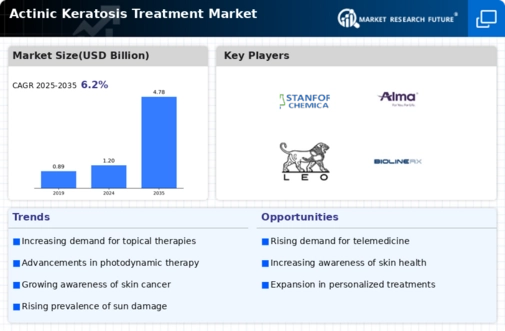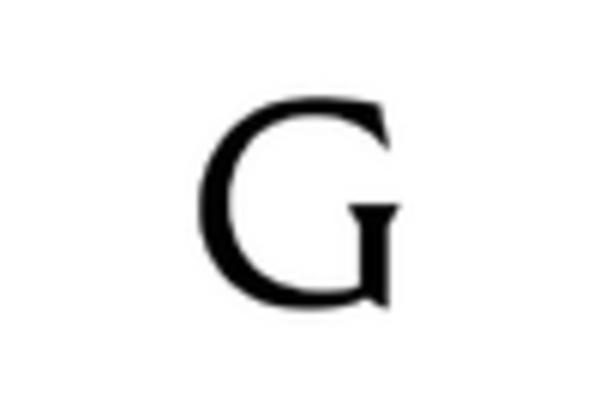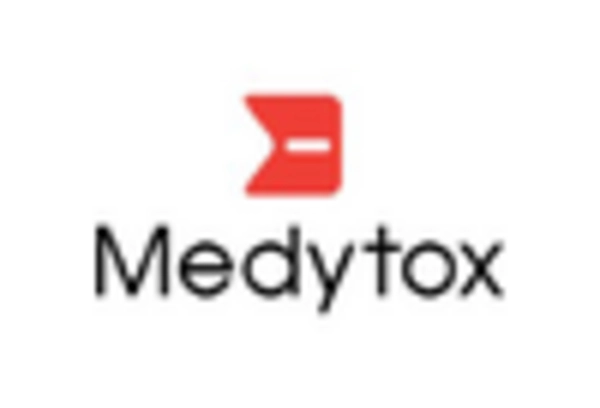-
Report Prologue
-
Market Introduction
-
Introduction 14
-
Assumptions & Limitations 14
-
Research Methodology
-
Research Process 17
-
Primary Research 17
-
Secondary Research 18
-
Market Size Estimation 18
- Market Share Analysis 19
- Market Pricing Approach 19
-
Market Dynamics
-
Introduction 21
-
Drivers 21
- Increasing Prevalence Of Actinic Keratosis 21
- Rising Demand And Acceptance Of Minimally Invasive Therapeutic Procedures 21
- Suitable Medical Coverage For A Variety Of Treatment Options Available In The Market 22
- Growing Geriatric Population 22
- Drivers Impact Analysis 22
-
Restraints 23
- High Cost Of Therapeutic Procedures 23
- Risk Factors Associated With The Available Treatment Options In The Market 23
- Restraints Impact Analysis 23
-
Opportunity 24
- Growing Markets Of Asia-Pacific 24
-
Mega Trends 24
- Application Of Cryosurgery In The Therapeutics Of Actinic Keratosis 24
-
Macroeconomic Indicator 24
-
Product Pipeline Analysis 25
- Introduction 25
- Aminolevulinic Acid Topical 20% Topical Solution, Device: BLU-U Blue Light Phototherapy Illuminator 25
- Oleogel-S10 100 Mg/G, Placebo (Petroleum Jelly) 26
- Aminolevulinic Acid-Based Photodynamic Therapy 26
- Topical Steroid Ointment, Skin Barrier Moisturizer 27
- Ingenol Mebutate Gel 0.015%, Ingenol Mebutate Gel 0.05% 27
- SR-T100 Gel 28
- Aminolevulinic Acid HCl 28
- SOR007 (Uncoated Nanoparticulate Paclitaxel) Ointment 29
- KX01 (Ointment) 29
-
Market Factor Analysis
-
Value Chain Analysis 31
- R&D And Designing 31
- Manufacturing 31
- Distribution & Sales 31
- Post-Sales Review 32
-
Porter’s Five Forces Model 32
- Bargaining Power Of Suppliers 32
- Bargaining Power Of Buyers 33
- Threat Of New Entrants 33
- Threat Of Substitutes 33
- Intensity Of Rivalry 33
-
Investment Opportunities 33
-
Pricing Analysis 33
-
Actinic Keratosis Treatment Market, By Type
-
Introduction 35
- Medications 36
- Procedures 36
-
Actinic Keratosis Treatment Market, By End User
-
Introduction 38
- Hospitals & Oncology Centers 39
- Dermatology Clinics 39
- Ambulatory Surgical Center 39
-
Global Actinic Keratosis Treatment Market, By Region
-
Introduction 41
-
Americas 42
-
Actinic Keratosis Treatment Market, By Type
-
Actinic Keratosis Treatment Market, By End User
-
North America 44
-
Actinic Keratosis Treatment Market, By Type
-
Actinic Keratosis Treatment Market, By End User
-
US 45
-
Actinic Keratosis Treatment Market, By Type
-
Actinic Keratosis Treatment Market, By End User
-
Canada 46
-
Actinic Keratosis Treatment Market, By Type
-
Actinic Keratosis Treatment Market, By End User
-
South America 47
-
Actinic Keratosis Treatment Market, By Type
-
Actinic Keratosis Treatment Market, By End User
-
Europe 48
-
Actinic Keratosis Treatment Market, By Type
-
Actinic Keratosis Treatment Market, By End User
-
Western Europe 50
-
Actinic Keratosis Treatment Market, By Type
-
Actinic Keratosis Treatment Market, By End User
-
Germany 51
-
Actinic Keratosis Treatment Market, By Type
-
Actinic Keratosis Treatment Market, By End User
-
France 52
-
Actinic Keratosis Treatment Market, By Type
-
Actinic Keratosis Treatment Market, By End User
-
UK 53
-
Actinic Keratosis Treatment Market, By Type
-
Actinic Keratosis Treatment Market, By End User
-
Italy 54
-
Actinic Keratosis Treatment Market, By Type
-
Actinic Keratosis Treatment Market, By End User
-
Spain 55
-
Actinic Keratosis Treatment Market, By Type
-
Actinic Keratosis Treatment Market, By End User
-
Rest Of Western Europe 56
-
Actinic Keratosis Treatment Market, By Type
-
Actinic Keratosis Treatment Market, By End User
-
Eastern Europe 57
-
Actinic Keratosis Treatment Market, By Type
-
Actinic Keratosis Treatment Market, By End User
-
Asia-Pacific 58
-
Actinic Keratosis Treatment Market, By Type
-
Actinic Keratosis Treatment Market, By End User
-
China 60
-
Actinic Keratosis Treatment Market, By Type
-
Actinic Keratosis Treatment Market, By End User
-
India 61
-
Actinic Keratosis Treatment Market, By Type
-
Actinic Keratosis Treatment Market, By End User
-
Japan 62
-
Actinic Keratosis Treatment Market, By Type
-
Actinic Keratosis Treatment Market, By End User
-
Australia 63
-
Actinic Keratosis Treatment Market, By Type
-
Actinic Keratosis Treatment Market, By End User
-
Rest Of Asia-Pacific 64
-
Actinic Keratosis Treatment Market, By Type
-
Actinic Keratosis Treatment Market, By End User
-
Middle East & Africa 65
-
Actinic Keratosis Treatment Market, By Type
-
Actinic Keratosis Treatment Market, By End User
-
Middle East 67
-
Actinic Keratosis Treatment Market, By Type
-
Actinic Keratosis Treatment Market, By End User
-
Africa 68
-
Actinic Keratosis Treatment Market, By Type
-
Actinic Keratosis Treatment Market, By End User
-
Competitive Landscape
-
Introduction 70
-
Company Profiles
-
Biofrontera AG 72
- Company Overview 72
- Financial Overview 72
- Products Offering 72
- Key Developments 73
- SWOT Analysis 73
- Key Strategy 73
-
Cipher Pharmaceuticals Inc. 74
- Company Overview 74
- Financial Overview 74
- Products Offering 75
- Key Developments 75
- SWOT Analysis 75
- Key Strategy 75
-
BioLineRx. 76
- Company Overview 76
- Financial Overview 76
- Products Offering 76
- Key Developments 76
- SWOT Analysis 77
- Key Strategy 77
-
Valeant Pharmaceuticals. 78
- Company Overview 78
- Financial Overview 78
- Products Offering 79
- Key Developments 79
- SWOT Analysis 79
- Key Strategy 79
-
Leo Pharma 80
- Company Overview 80
- Financial Overview 80
- Products Offering 81
- Key Developments 81
- SWOT Analysis 81
- Key Strategy 81
-
Galderma SA 82
- Company Overview 82
- Financial Overview 82
- Products Offering 82
- Key Developments 82
- SWOT Analysis 82
- Key Strategy 82
-
Sun Pharmaceutical Industries Ltd 83
- Company Overview 83
- Products Offerings 84
- Key Developments 84
- SWOT Analysis 84
- Key Strategy 84
-
3M 85
- Company Overview 85
- Products Offerings 85
- Key Developments 86
- SWOT Analysis 86
- Key Strategy 86
-
Alma Lasers 87
- Company Overview 87
- Products Offerings 87
- Key Developments 87
- SWOT Analysis 87
- Key Strategy 87
-
Stanford Chemicals 88
- Company Overview 88
- Financial Overview 88
- Products Offering 88
- Key Developments 88
- SWOT Analysis 88
-
Conclusion
-
Key Findings 90
- From CEO’s View Point 90
-
Key Companies To Watch 90
-
Appendix
-
Discussion Blue Print 92
-
List Of Tables
-
ACTINIC KERATOSIS TREATMENT MARKET: PRODUCT PIPELINE ANALYSIS 25
-
GLOBAL ACTINIC KERATOSIS TREATMENT MARKET BY TYPE 2020–2027 (USD MILLION) 35
-
GLOBAL ACTINIC KERATOSIS TREATMENT MARKET FOR MEDICATIONS 2020–2027 (USD MILLION) 36
-
GLOBAL ACTINIC KERATOSIS TREATMENT MARKET FOR PROCEDURES 2020–2027 (USD MILLION) 36
-
GLOBAL ACTINIC KERATOSIS TREATMENT MARKET BY END USER 2020–2027 (USD MILLION) 38
-
GLOBAL ACTINIC KERATOSIS TREATMENT MARKET FOR HOSPITALS & ONCOLOGY CENTERS 2020–2027 (USD MILLION) 39
-
GLOBAL ACTINIC KERATOSIS TREATMENT MARKET FOR DERMATOLOGY CLINICS 2020–2027 (USD MILLION) 39
-
GLOBAL ACTINIC KERATOSIS TREATMENT MARKET FOR AMBULATORY SURGICAL CENTER 2020–2027 (USD MILLION) 39
-
GLOBAL ACTINIC KERATOSIS TREATMENT MARKET BY REGION 2020–2027 (USD MILLION) 41
-
GLOBAL ACTINIC KERATOSIS TREATMENT MARKET BY REGION MARKET SHARE 2020 (%) 41
-
AMERICAS ACTINIC KERATOSIS TREATMENT MARKET BY REGION 2020–2027 (USD MILLION) 42
-
AMERICAS ACTINIC KERATOSIS TREATMENT MARKET BY TYPE 2020–2027 (USD MILLION) 43
-
AMERICAS ACTINIC KERATOSIS TREATMENT MARKET BY END USER 2020–2027 (USD MILLION) 43
-
NORTH AMERICA ACTINIC KERATOSIS TREATMENT MARKET BY TYPE 2020–2027 (USD MILLION) 44
-
NORTH AMERICA ACTINIC KERATOSIS TREATMENT MARKET BY END USER 2020–2027 (USD MILLION) 44
-
US ACTINIC KERATOSIS TREATMENT MARKET BY TYPE 2020–2027 (USD MILLION) 45
-
US ACTINIC KERATOSIS TREATMENT MARKET BY END USER 2020–2027 (USD MILLION) 45
-
CANADA ACTINIC KERATOSIS TREATMENT MARKET BY TYPE 2020–2027 (USD MILLION) 46
-
CANADA ACTINIC KERATOSIS TREATMENT MARKET BY END USER 2020–2027 (USD MILLION) 46
-
SOUTH AMERICA ACTINIC KERATOSIS TREATMENT MARKET BY TYPE 2020–2027 (USD MILLION) 47
-
SOUTH AMERICA ACTINIC KERATOSIS TREATMENT MARKET BY END USER 2020–2027 (USD MILLION) 47
-
EUROPE ACTINIC KERATOSIS TREATMENT MARKET BY REGION 2020–2027 (USD MILLION) 48
-
EUROPE ACTINIC KERATOSIS TREATMENT MARKET BY TYPE 2020–2027 (USD MILLION) 49
-
EUROPE ACTINIC KERATOSIS TREATMENT MARKET BY END USER 2020–2027 (USD MILLION) 49
-
WESTERN EUROPE ACTINIC KERATOSIS TREATMENT MARKET BY TYPE 2020–2027 (USD MILLION) 50
-
WESTERN EUROPE ACTINIC KERATOSIS TREATMENT MARKET BY END USER 2020–2027 (USD MILLION) 50
-
GERMANY ACTINIC KERATOSIS TREATMENT MARKET BY TYPE 2020–2027 (USD MILLION) 51
-
GERMANY ACTINIC KERATOSIS TREATMENT MARKET BY END USER 2020–2027 (USD MILLION) 51
-
FRANCE ACTINIC KERATOSIS TREATMENT MARKET BY TYPE 2020–2027 (USD MILLION) 52
-
FRANCE ACTINIC KERATOSIS TREATMENT MARKET BY END USER 2020–2027 (USD MILLION) 52
-
UK ACTINIC KERATOSIS TREATMENT MARKET BY TYPE 2020–2027 (USD MILLION) 53
-
UK ACTINIC KERATOSIS TREATMENT MARKET BY END USER 2020–2027 (USD MILLION) 53
-
ITALY ACTINIC KERATOSIS TREATMENT MARKET BY TYPE 2020–2027 (USD MILLION) 54
-
ITALY ACTINIC KERATOSIS TREATMENT MARKET BY END USER 2020–2027 (USD MILLION) 54
-
SPAIN ACTINIC KERATOSIS TREATMENT MARKET BY TYPE 2020–2027 (USD MILLION) 55
-
SPAIN ACTINIC KERATOSIS TREATMENT MARKET BY END USER 2020–2027 (USD MILLION) 55
-
REST OF WESTERN EUROPE ACTINIC KERATOSIS TREATMENT MARKET BY TYPE 2020–2027 (USD MILLION) 56
-
REST OF WESTERN EUROPE ACTINIC KERATOSIS TREATMENT MARKET BY END USER 2020–2027 (USD MILLION) 56
-
EASTERN EUROPE ACTINIC KERATOSIS TREATMENT MARKET BY TYPE 2020–2027 (USD MILLION) 57
-
EASTERN EUROPE ACTINIC KERATOSIS TREATMENT MARKET BY END USER 2020–2027 (USD MILLION) 57
-
ASIA-PACIFIC ACTINIC KERATOSIS TREATMENT MARKET BY COUNTRY 2020–2027 (USD MILLION) 58
-
ASIA-PACIFIC ACTINIC KERATOSIS TREATMENT MARKET BY TYPE 2020–2027 (USD MILLION) 59
-
ASIA-PACIFIC ACTINIC KERATOSIS TREATMENT MARKET BY END USER 2020–2027 (USD MILLION) 59
-
CHINA ACTINIC KERATOSIS TREATMENT MARKET BY TYPE 2020–2027 (USD MILLION) 60
-
CHINA ACTINIC KERATOSIS TREATMENT MARKET BY END USER 2020–2027 (USD MILLION) 60
-
INDIA ACTINIC KERATOSIS TREATMENT MARKET BY TYPE 2020–2027 (USD MILLION) 61
-
INDIA ACTINIC KERATOSIS TREATMENT MARKET BY END USER 2020–2027 (USD MILLION) 61
-
JAPAN ACTINIC KERATOSIS TREATMENT MARKET BY TYPE 2020–2027 (USD MILLION) 62
-
JAPAN ACTINIC KERATOSIS TREATMENT MARKET BY END USER 2020–2027 (USD MILLION) 62
-
AUSTRALIA ACTINIC KERATOSIS TREATMENT MARKET BY TYPE 2020–2027 (USD MILLION) 63
-
AUSTRALIA ACTINIC KERATOSIS TREATMENT MARKET BY END USER 2020–2027 (USD MILLION) 63
-
REST OF ASIA PACIFIC ACTINIC KERATOSIS TREATMENT MARKET BY TYPE 2020–2027 (USD MILLION) 64
-
REST OF ASIA PACIFIC ACTINIC KERATOSIS TREATMENT MARKET BY END USER 2020–2027 (USD MILLION) 64
-
THE MIDDLE EAST & AFRICA ACTINIC KERATOSIS TREATMENT MARKET BY REGION 2020–2027 (USD MILLION) 65
-
THE MIDDLE EAST & AFRICA ACTINIC KERATOSIS TREATMENT MARKET BY TYPE 2020–2027 (USD MILLION) 66
-
THE MIDDLE EAST & AFRICA ACTINIC KERATOSIS TREATMENT MARKET BY END USER 2020–2027 (USD MILLION) 66
-
THE MIDDLE EAST ACTINIC KERATOSIS TREATMENT MARKET BY TYPE 2020–2027 (USD MILLION) 67
-
THE MIDDLE EAST ACTINIC KERATOSIS TREATMENT MARKET BY END USER 2020–2027 (USD MILLION) 67
-
AFRICA ACTINIC KERATOSIS TREATMENT MARKET BY TYPE 2020–2027 (USD MILLION) 68
-
AFRICA ACTINIC KERATOSIS TREATMENT MARKET BY END USER 2020–2027 (USD MILLION) 68
-
List Of Figures
-
MARKET STRUCTURE 15
-
RESEARCH PROCESS 17
-
DROC ANALYSIS OF THE GLOBAL ACTINIC KERATOSIS TREATMENT MARKET 21
-
DRIVERS IMPACT ANALYSIS: GLOBAL ACTINIC KERATOSIS TREATMENT MARKET 22
-
RESTRAINTS IMPACT ANALYSIS: GLOBAL ACTINIC KERATOSIS TREATMENT MARKET 23
-
VALUE CHAIN: GLOBAL ACTINIC KERATOSES TREATMENT MARKET 31
-
PORTERS FIVE FORCES MODEL: GLOBAL ACTINIC KERATOSES TREATMENT MARKET 32
-
GLOBAL ACTINIC KERATOSIS TREATMENT MARKET BY TYPE 2020 & 2027 (USD MILLION) 36
-
GLOBAL ACTINIC KERATOSIS TREATMENT MARKET BY END USER 2020 & 2027 (USD MILLION) 38
-
AMERICAS ACTINIC KERATOSIS TREATMENT MARKET BY REGION MARKET SHARE 2020 (%) 42
-
EUROPE ACTINIC KERATOSIS TREATMENT MARKET BY REGION MARKET SHARE 2020 (%) 48
-
ASIA PACIFIC ACTINIC KERATOSIS TREATMENT MARKET BY REGION MARKET SHARE 2020 (%) 58
-
THE MIDDLE EAST & AFRICA ACTINIC KERATOSIS TREATMENT MARKET BY REGION MARKET SHARE 2020 (%) 65
-
GLOBAL ACITNIC KERATOSES TREATMENT, MAJOR PLAYERS MARKET SHARE ANALYSIS, 2020 (%) 70

















Leave a Comment